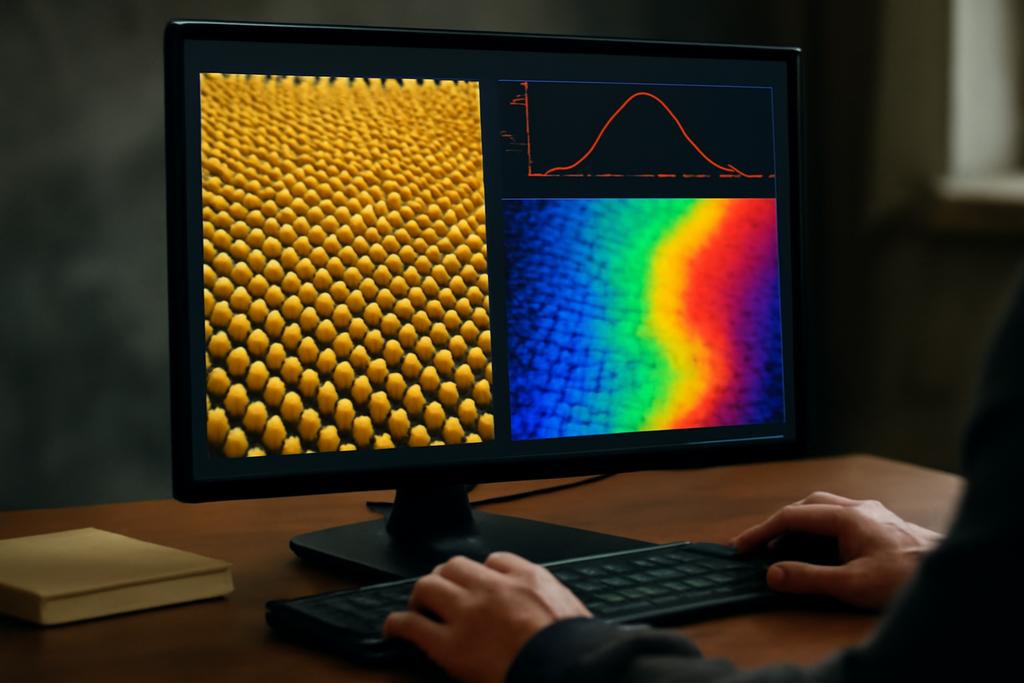A New Era of Nanophotonics Design
Imagine designing materials at the nanoscale with such precision that you can control light at the level of individual wavelengths. This isn’t science fiction; it’s the promise of advanced nanophotonics. And a recent breakthrough from researchers at Mahindra University in Hyderabad, India, led by Jayasri Dontabhaktuni and Sreeraj Rajan Warrier, is pushing us closer to this reality. Their work utilizes a novel hybrid methodology that combines quantum machine learning with physics-informed neural networks to design metasurfaces with unprecedented control over light absorption.
Metasurfaces: Tiny Structures, Big Impact
Metasurfaces are essentially flat surfaces engineered with subwavelength nanostructures. Think of them as exquisitely crafted nanoscale landscapes that interact with light in extraordinary ways. Their ability to precisely manipulate the properties of light — wavelength, polarization, direction — opens doors to a vast range of applications. In areas like thermal emitters, they allow for precise control over heat radiation; in sensors, they enhance the sensitivity of detection; and in photodetectors, they boost signal-to-noise ratios.
The challenge, however, has been in the design process. Traditional methods rely on computationally expensive simulations to predict the behavior of these complex nanostructures. Designing a metasurface with specific properties, like precise narrow-band absorption, is akin to sculpting with atoms — incredibly challenging and time-consuming.
Inverse Design: A Quantum Solution
This is where the concept of “inverse design” comes in. Instead of painstakingly calculating the properties of a given structure, inverse design flips the problem. You specify the desired properties (e.g., a specific absorption wavelength), and the algorithm searches for the structure that will deliver them. This approach is more akin to giving the machine a target and letting it figure out the best way to hit it, instead of trying to calculate the trajectory yourself.
The Mahindra University team tackled this challenge by introducing a novel hybrid methodology that uses generative adversarial networks (GANs) – both classical and quantum versions – combined with physics-informed neural networks (PINNs). GANs, often described as having a generator and a discriminator, are a type of machine learning algorithm that can generate new data that resembles the data it’s trained on. The generator creates candidates, while the discriminator evaluates them. In this case, the candidates are designs for the metasurfaces.
The key innovation is the integration of PINNs. PINNs enforce physical laws and constraints into the design process. Instead of letting the GAN create physically implausible or impossible designs, the PINNs act as a filter, ensuring the generated designs adhere to the laws of physics and the desired properties. It’s like having a reality check built into the design process.
Quantum Advantage: Faster, Smaller, Better
The study takes this a step further by incorporating a quantum generative adversarial network (QGAN). Quantum computers, operating on the principles of quantum mechanics, have the potential to solve certain problems far more efficiently than classical computers. In this case, the researchers found that the QGAN, when combined with PINNs, significantly improved the performance of the inverse design process. The results were striking:
Faster Convergence: The QGAN + PINN model converged to a solution much faster than the classical GAN + PINN approach, requiring far fewer iterations. The difference in runtime was found to be about 24 times faster than conventional GANs.
Reduced Training Data: The quantum model required orders of magnitude less training data (99.5% fewer samples). The classical GAN + PINN model needed thousands of training examples, while the QGAN + PINN model delivered excellent results with just a fraction of that data. This makes the process much more efficient and potentially accessible to researchers with limited resources.
Improved Accuracy: The QGAN + PINN model achieved an order of magnitude lower mean squared error (MSE) than the classical approach. This indicates a much higher degree of accuracy in generating metasurfaces with the precise properties specified.
Unforeseen Emergence: High-Q Factors
Perhaps the most surprising result was the ability of the QGAN + PINN model to generate metasurfaces with quality factors (Q-factors) far exceeding those in the training dataset. The Q-factor is a measure of the sharpness of a resonance; a higher Q-factor indicates a sharper resonance, meaning better control over light absorption at specific wavelengths. The model, even when trained on designs with relatively low Q-factors, produced designs with Q-factors over 105 — an impressive feat that reflects the enhanced expressiveness of the quantum approach.
Implications and Future Directions
This research represents a significant step forward in nanophotonics design. The ability to quickly and accurately generate highly customized metasurfaces opens up a wealth of possibilities. Applications range from highly sensitive sensors for medical diagnostics to advanced thermal management systems for energy efficiency. The researchers at Mahindra University have shown that combining quantum machine learning with physics-based models can lead to faster, more efficient, and more accurate design processes. As quantum computing technologies mature, this approach holds the potential to revolutionize the field of nanophotonics and enable the creation of devices with functionalities previously thought impossible.
The study’s findings are both significant and thought-provoking. It showcases the potential of quantum machine learning to accelerate scientific discovery and engineering innovation. This is not just an incremental improvement in design techniques but an indication that this hybrid approach could become the gold standard for designing complex nanostructures with highly specific optical properties. Further research to explore different resonance types, material properties, and structural designs will undoubtedly build upon these exciting findings, paving the way for future innovations in the realm of nanophotonics.










